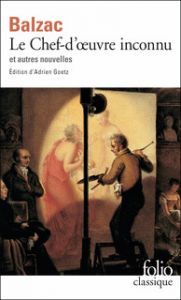
I am an obsessive re-reader: since my adolescence Balzac, Tolstoy, and Proust have been my constant companions. When I want to branch out, I simply abandon the great, classical novels of my three geniuses and turn to their short stories. This summer, I went back to a Balzac novella, The Unknown Masterpiece. It is the story of a fictional 17th-century painter, Frenhofer, who spends 10 years on the portrait of a woman and ends up with what a young Nicolas Poussin, (in his text, Balzac mixes fictional and historical characters) describes as nothing but confused masses of color contained by a multitude of strange lines, forming a high wall of paint out of which emerges a delightful foot. Undone by the incomprehension of his colleague, Frenhofer sets fire to his studio and dies amid his whole production.
The novella is open to various interpretations. One can read it running forward anachronistically. The implication that Balzac predicted the evolution of modern art is irresistible. When his Frenhofer claims that there are no outlines in nature, Balzac seems to be anticipating the Impressionists by 30 years. One can read it as the difficulty of distinguishing between the authentically new and a mad obsession. One can also focus on the exploration of the relation between the male painter and the female nude. These are only a few of the questions that arise in this 160-page story. It is one of the best books on painting. No wonder Cézanne was so moved by it that he declared “I am Frenhofer.”

